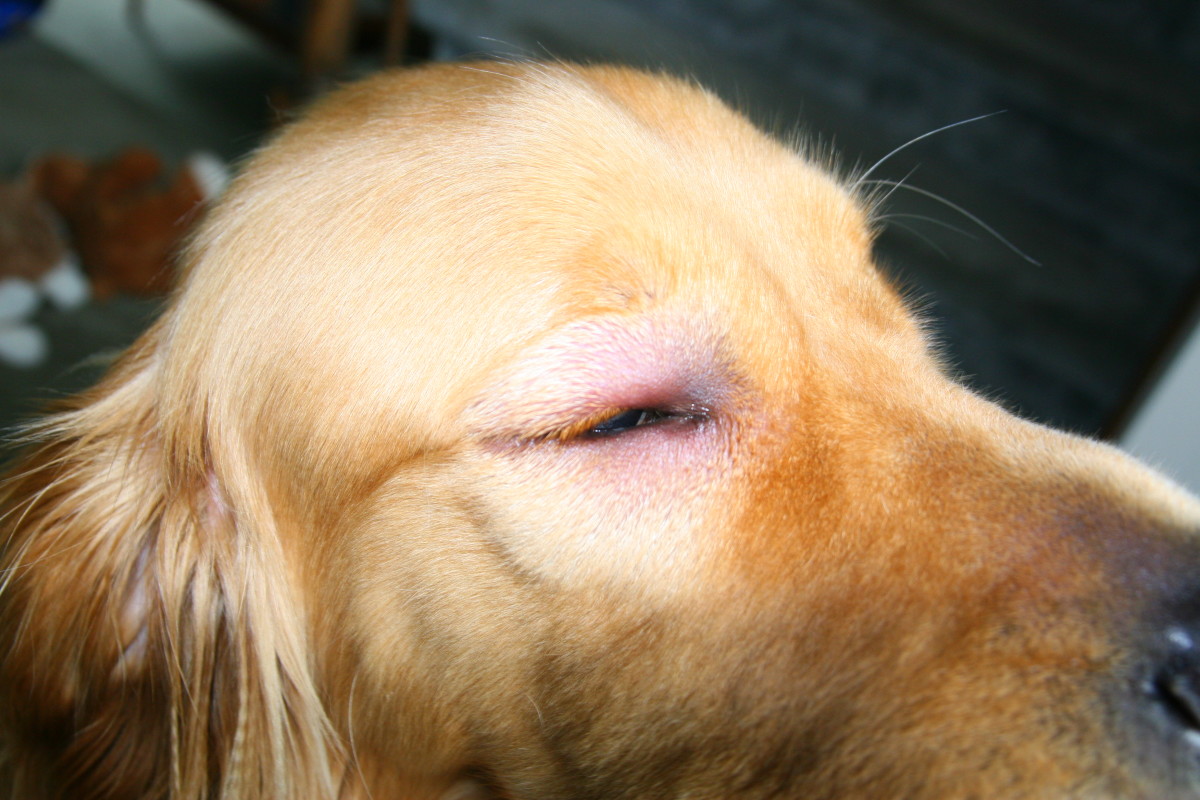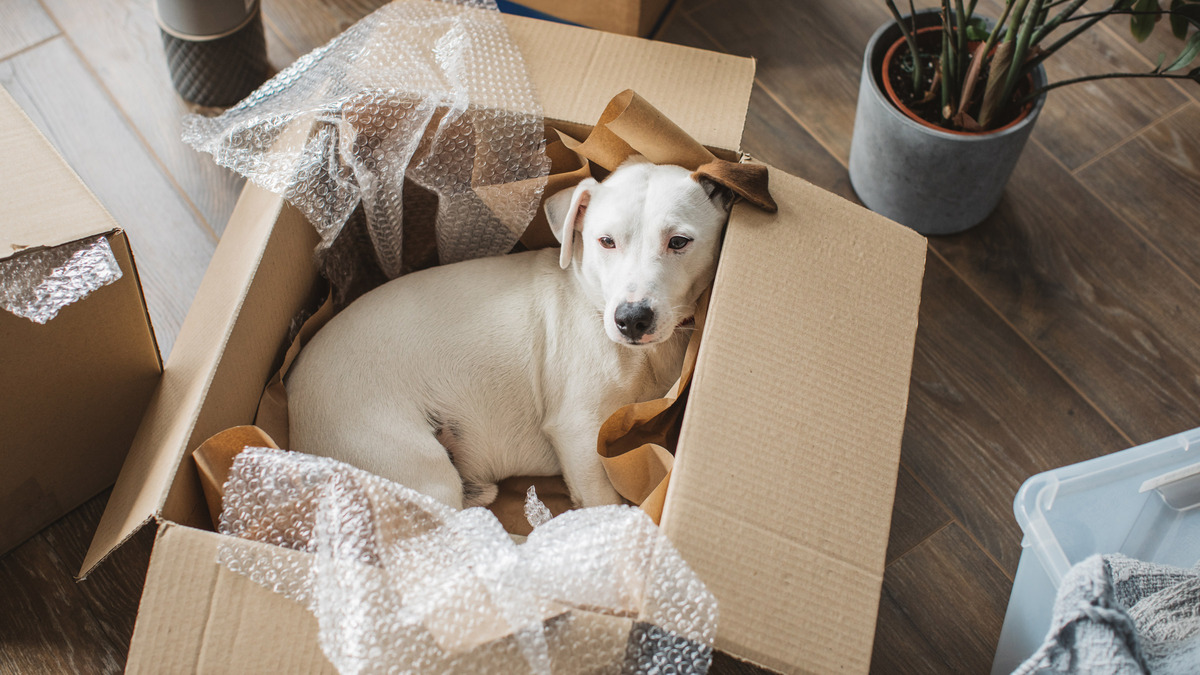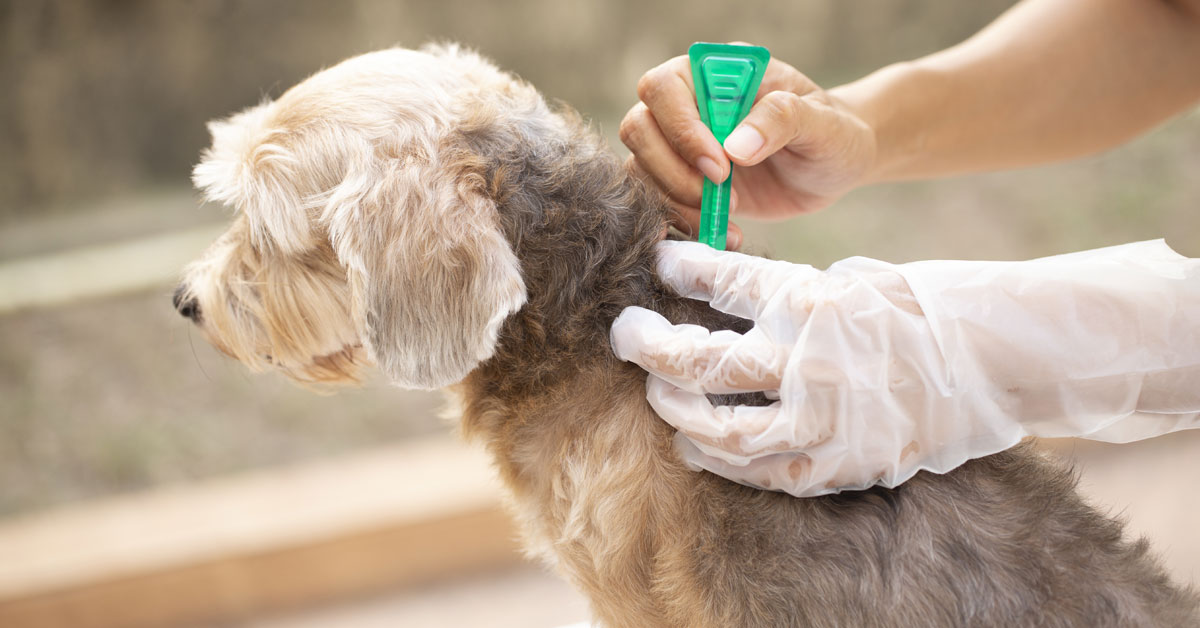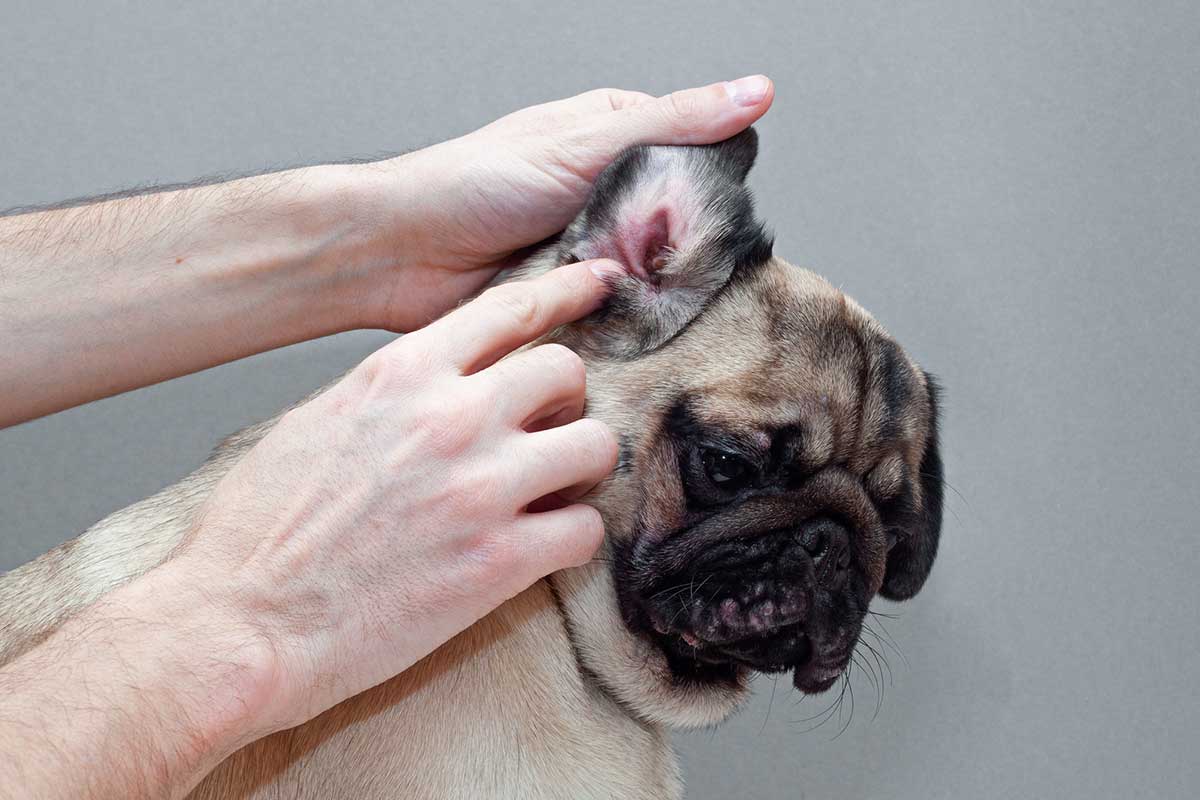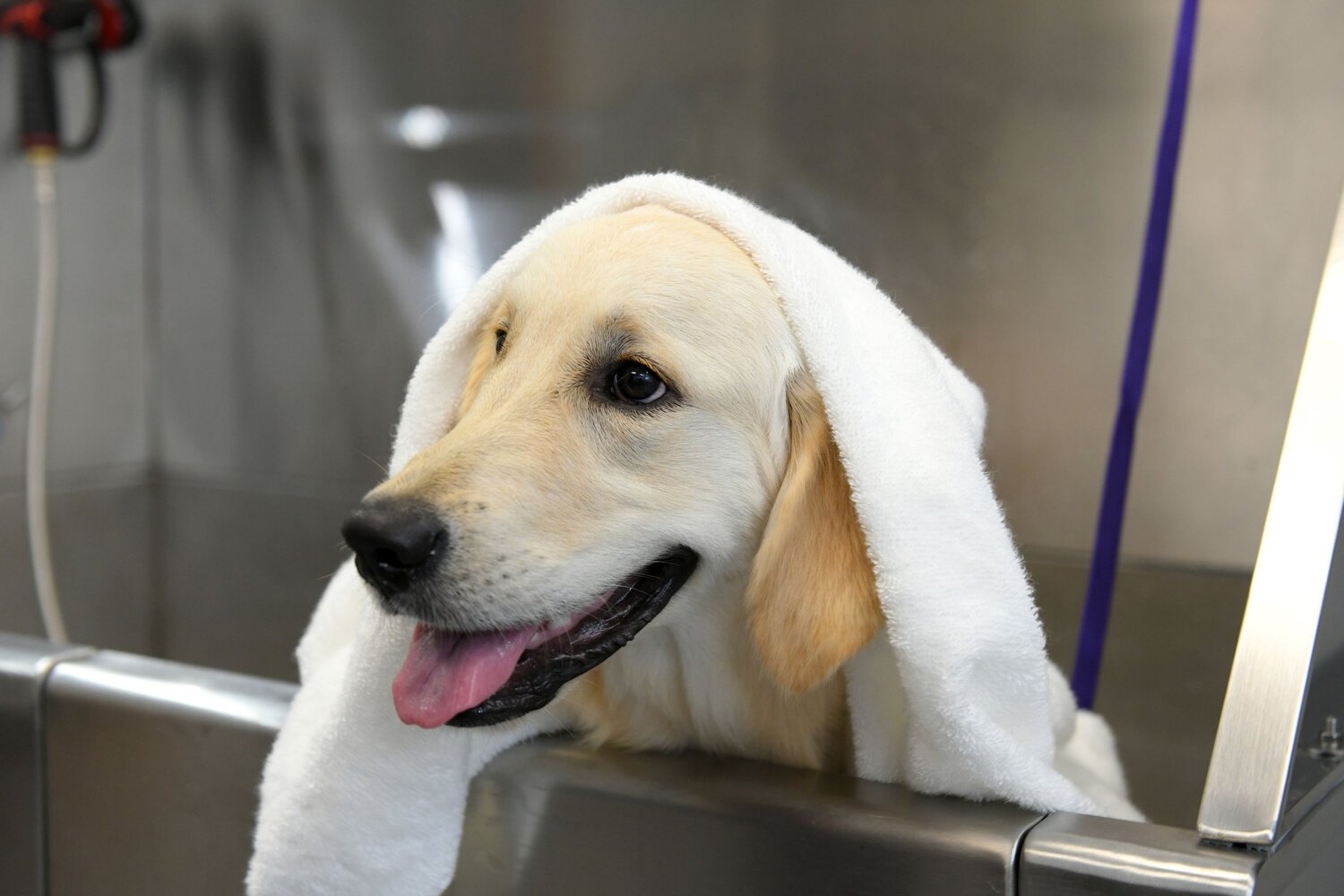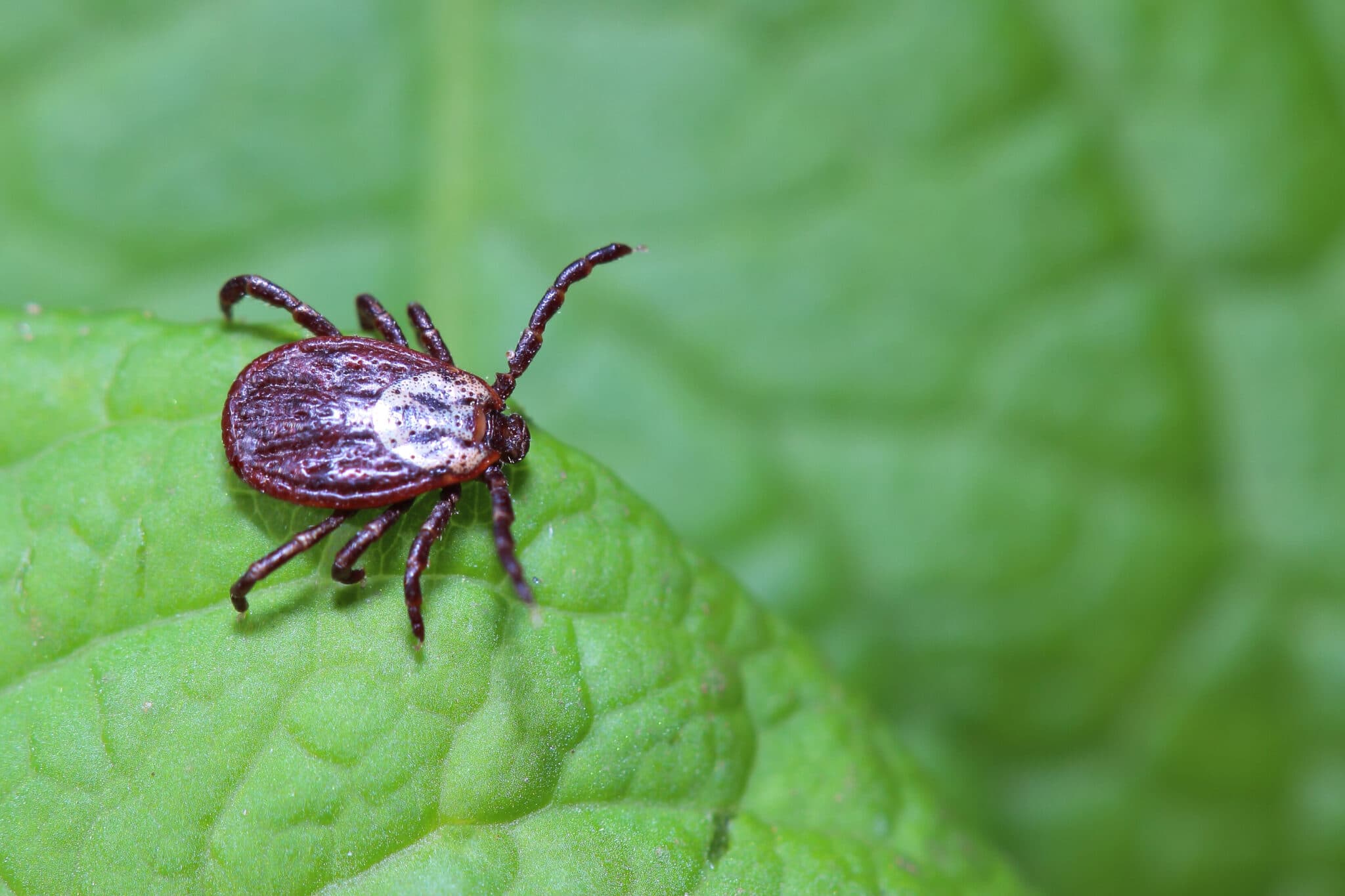Home>Health & Wellness>Common Health Issues>Eye and Ear Health>How Do You Get Rid Of Dog Eye Stains
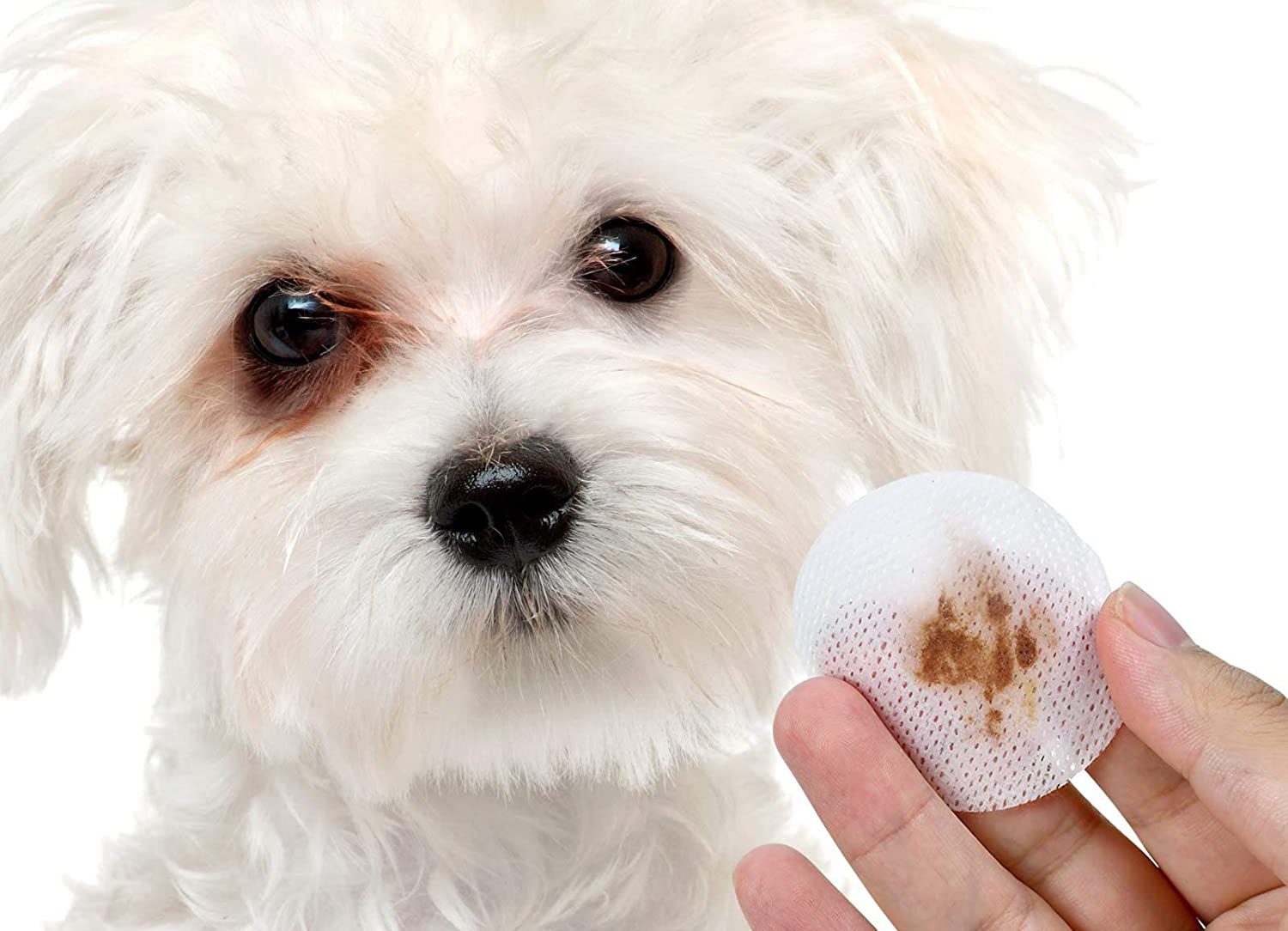

Eye and Ear Health
How Do You Get Rid Of Dog Eye Stains
Modified: February 21, 2024
Improve your dog's eye and ear health with our expert tips on getting rid of unsightly eye stains. Discover effective solutions for a happier, healthier pet.
(Many of the links in this article redirect to a specific reviewed product. Your purchase of these products through affiliate links helps to generate commission for Pawsomeoldies.com, at no extra cost. Learn more)
Table of Contents
Introduction
Dog eye stains, also known as tear stains, are a common concern for many pet owners. These unsightly reddish-brown streaks that form beneath a dog's eyes can detract from their appearance and indicate potential health issues. Understanding the causes of dog eye stains, as well as effective prevention and removal methods, is essential for maintaining your furry friend's eye health and overall well-being.
Eye stains are particularly noticeable in dogs with light-colored fur, making them a cause for concern among pet owners who want their canine companions to look and feel their best. While these stains are not typically harmful, they can be indicative of underlying health issues such as excessive tearing, eye infections, or blocked tear ducts. Therefore, it's crucial to address the root causes of dog eye stains to ensure the health and happiness of your beloved pet.
In this comprehensive guide, we will delve into the various factors that contribute to dog eye stains, including tear production, fur color, and breed-specific predispositions. We will also explore practical tips for preventing eye stains from forming in the first place, as well as safe and effective home remedies and commercial products for removing existing stains.
By gaining a deeper understanding of the causes and solutions for dog eye stains, you can take proactive steps to maintain your dog's ocular health and enhance their overall appearance. Whether you're a seasoned pet owner or a first-time dog parent, this guide will equip you with the knowledge and tools necessary to address and prevent eye stains, ensuring that your furry friend's eyes remain bright, clear, and free from unsightly discoloration.
Read more: How Do You Get Rid Of Seed Ticks From Dogs
Understanding the Causes of Dog Eye Stains
Dog eye stains, also known as tear stains, are a common occurrence that can be attributed to various factors. Understanding the underlying causes of these unsightly reddish-brown streaks beneath a dog's eyes is crucial for effectively addressing and preventing them. Here are the primary factors contributing to dog eye stains:
-
Excessive Tearing: Dogs naturally produce tears to keep their eyes moist and free from irritants. However, excessive tearing, also known as epiphora, can lead to the accumulation of tear residue, resulting in noticeable stains beneath the eyes. Breeds with prominent or protruding eyes, such as Shih Tzus and Maltese, are particularly prone to excessive tearing due to their eye structure.
-
Fur Color and Texture: Light-colored and long-haired breeds are more susceptible to visible tear stains. The porphyrins present in tears can react with the pigments in light-colored fur, resulting in noticeable discoloration. Additionally, dogs with long facial hair are more likely to trap and retain tears, exacerbating the staining effect.
-
Diet and Nutrition: The quality of a dog's diet can impact tear production and the composition of their tears. Certain food additives, preservatives, and artificial colorings may contribute to increased tear production and subsequent staining. Additionally, food sensitivities or allergies can lead to excessive tearing and eye irritation, further exacerbating the formation of stains.
-
Eye Infections and Irritation: Underlying eye infections, allergies, or irritants can cause dogs to produce excessive tears, leading to the formation of stains. It's essential to address any underlying health issues that may be contributing to tear production and ensure proper eye hygiene to prevent infections and irritation.
-
Blocked Tear Ducts: Blocked tear ducts can impede the natural drainage of tears, leading to an overflow and subsequent staining. This can be caused by anatomical abnormalities, inflammation, or foreign objects obstructing the tear ducts.
By understanding these causes, pet owners can take proactive measures to address and prevent dog eye stains. From maintaining proper eye hygiene to addressing underlying health issues, a comprehensive approach can help minimize tear staining and promote optimal eye health for our beloved canine companions.
Tips for Preventing Dog Eye Stains
Preventing dog eye stains requires a proactive approach that encompasses various aspects of a dog's health and hygiene. By implementing the following tips, pet owners can effectively minimize the occurrence of unsightly tear stains and promote their furry friend's ocular well-being:
-
Regular Grooming: Maintaining proper grooming practices is essential for preventing dog eye stains. Regularly trimming the fur around the eyes can minimize the accumulation of tear residue, reducing the likelihood of staining. Additionally, keeping the facial area clean and free from debris can help prevent irritation and excessive tearing.
-
High-Quality Diet: Providing a balanced and high-quality diet is crucial for preventing excessive tearing and subsequent eye stains. Opt for premium dog food that is free from artificial additives, colorings, and preservatives, as these can contribute to increased tear production and staining. Additionally, ensuring adequate hydration can help maintain the proper composition of tears and reduce the likelihood of visible stains.
-
Eye Hygiene: Practicing good eye hygiene is essential for preventing eye stains in dogs. Regularly wiping the area beneath the eyes with a gentle, pet-safe cleanser can help remove tear residue and prevent the buildup of stains. It's important to use soft, non-abrasive materials to avoid causing irritation to the delicate skin around the eyes.
-
Regular Veterinary Check-ups: Scheduling regular veterinary check-ups is crucial for monitoring your dog's eye health and addressing any underlying issues that may contribute to excessive tearing and staining. Your veterinarian can provide valuable insights into maintaining optimal eye health and recommend appropriate interventions if tear staining becomes a concern.
-
Environmental Considerations: Environmental factors can impact a dog's eye health and tear production. Minimizing exposure to potential irritants such as dust, pollen, and smoke can help reduce eye irritation and excessive tearing, ultimately decreasing the likelihood of visible stains.
-
Stress Management: Stress and anxiety can contribute to excessive tearing in dogs, leading to the formation of eye stains. Creating a calm and comfortable environment for your dog, providing ample opportunities for exercise and mental stimulation, and addressing any behavioral issues can help minimize stress-related tearing and prevent the development of eye stains.
By incorporating these preventive measures into your dog's care routine, you can effectively reduce the occurrence of eye stains and promote their overall ocular health. Taking a proactive and holistic approach to preventing dog eye stains can contribute to your furry friend's well-being and enhance their quality of life.
Home Remedies for Removing Dog Eye Stains
When it comes to addressing dog eye stains, many pet owners prefer natural and gentle remedies to effectively remove unsightly discoloration beneath their furry friend's eyes. Home remedies offer a safe and cost-effective alternative to commercial products, providing pet owners with the means to tackle tear stains using readily available household items. Here are several home remedies that can help effectively remove dog eye stains:
1. Warm Water and Saline Solution
A simple yet effective home remedy for removing dog eye stains involves using a warm water and saline solution. By gently soaking a clean cloth or cotton pad in the solution and carefully wiping the stained area beneath the dog's eyes, pet owners can effectively loosen and remove tear residue. The gentle nature of this remedy makes it suitable for dogs with sensitive skin, and regular use can help minimize the visibility of eye stains.
Read more: How To Get Rid Of Mites By A Dog’s Eye
2. Organic Apple Cider Vinegar
Organic apple cider vinegar is renowned for its natural cleansing properties and can be diluted with water to create a gentle solution for removing dog eye stains. When applied with a soft cloth or cotton pad, the diluted apple cider vinegar can help break down tear stains and restore the natural clarity of the fur beneath the eyes. It's important to ensure proper dilution to avoid irritation, and pet owners should monitor their dog's skin reaction when using this remedy.
3. Coconut Oil
Coconut oil is a versatile and nourishing remedy that can be used to gently remove dog eye stains while providing moisturizing benefits for the surrounding skin. By applying a small amount of coconut oil to the stained area and allowing it to sit for a few minutes, pet owners can then carefully wipe away the softened tear residue. Additionally, the natural antibacterial properties of coconut oil can help promote overall skin health around the eyes.
4. Chamomile Tea Compress
Chamomile tea, known for its soothing and anti-inflammatory properties, can be used to create a gentle compress for removing dog eye stains. After brewing a strong chamomile tea and allowing it to cool, pet owners can soak a clean cloth in the tea and apply it to the stained area for several minutes. The chamomile's calming effects can help reduce inflammation and gently lift away tear stains, providing a natural and comforting remedy for dogs with eye discoloration.
5. Oatmeal Paste
Oatmeal paste, made by mixing finely ground oatmeal with water to create a thick consistency, can serve as a mild exfoliating remedy for removing dog eye stains. When applied to the stained area and gently massaged in circular motions, the oatmeal paste can help lift and remove tear residue while soothing the skin. This gentle exfoliation can aid in restoring the natural color and clarity of the fur beneath the eyes.
By incorporating these home remedies into their dog's grooming routine, pet owners can effectively address and minimize the visibility of eye stains while prioritizing their furry friend's comfort and well-being. It's important to approach the use of home remedies with caution, ensuring that they are suitable for the individual dog's skin sensitivity and monitoring for any adverse reactions. With consistent and gentle care, these natural remedies can contribute to maintaining clear, healthy eyes for our beloved canine companions.
Read more: How To Get Rid Of Fleas In A Dog Pen
Commercial Products for Removing Dog Eye Stains
In addition to home remedies, there are various commercial products specifically formulated to address and remove dog eye stains. These products offer convenience and targeted solutions for pet owners seeking effective ways to eliminate unsightly discoloration beneath their dog's eyes. From tear stain removers to gentle cleansing solutions, the market offers a range of options designed to safely and efficiently tackle eye stains in dogs.
-
Tear Stain Remover Wipes: Tear stain remover wipes are pre-moistened pads designed to gently cleanse and remove tear stains from the fur around a dog's eyes. These convenient wipes are formulated with mild and non-irritating ingredients, making them suitable for regular use. By carefully wiping the stained area with these specialized pads, pet owners can effectively lift and eliminate tear residue, restoring the natural clarity of their dog's fur.
-
Tear Stain Cleansing Solutions: Commercial tear stain cleansing solutions are specifically formulated to target and remove stubborn eye stains in dogs. These solutions often contain gentle yet effective ingredients that help break down tear residue and prevent further staining. When applied with a soft cloth or cotton pad, these solutions provide a targeted approach to addressing eye stains, promoting clear and healthy eyes for canine companions.
-
Tear Stain Powder: Tear stain powders offer an alternative method for removing and preventing eye stains in dogs. These powders are designed to be applied directly to the stained area, where they work to absorb moisture and lift tear residue. Additionally, tear stain powders often contain ingredients that help inhibit bacterial growth, contributing to long-term stain prevention and maintenance.
-
Tear Stain Supplements: Some commercial products come in the form of tear stain supplements, which are designed to address tear staining from within. These supplements often contain natural ingredients that support optimal tear production and eye health, ultimately reducing the likelihood of visible eye stains. By incorporating tear stain supplements into their dog's daily routine, pet owners can take a proactive approach to minimizing tear staining and promoting ocular well-being.
-
Tearless Facial Cleansers: Tearless facial cleansers are gentle, non-irritating solutions formulated for regular use in maintaining clear and healthy eyes for dogs. These cleansers are designed to be applied to the facial area, effectively removing tear residue and preventing the buildup of stains. Their tearless nature ensures a comfortable and safe cleansing experience for dogs, making them a convenient option for pet owners seeking a gentle yet effective solution.
By exploring and utilizing these commercial products, pet owners can effectively address and remove dog eye stains, promoting optimal ocular health and enhancing the overall well-being of their furry companions. It's important to select products that are suitable for the individual dog's skin sensitivity and to follow the usage instructions provided by the manufacturers. With the right commercial products and consistent care, pet owners can effectively manage and minimize the visibility of eye stains, ensuring that their dogs maintain clear, bright eyes.
Conclusion
In conclusion, addressing and preventing dog eye stains requires a multifaceted approach that encompasses understanding the underlying causes, implementing preventive measures, and utilizing safe and effective removal methods. By gaining insights into the primary factors contributing to tear staining, such as excessive tearing, fur color and texture, diet and nutrition, eye infections, and blocked tear ducts, pet owners can take proactive steps to maintain their dog's ocular health.
Through the implementation of preventive tips, including regular grooming, providing a high-quality diet, practicing good eye hygiene, scheduling veterinary check-ups, considering environmental factors, and managing stress, pet owners can significantly reduce the likelihood of visible eye stains in their furry companions. These proactive measures not only contribute to minimizing tear staining but also promote overall eye health and well-being.
Furthermore, the availability of home remedies and commercial products offers pet owners a range of safe and targeted solutions for removing existing eye stains. Home remedies, such as warm water and saline solution, organic apple cider vinegar, coconut oil, chamomile tea compress, and oatmeal paste, provide natural and gentle options for effectively addressing tear staining. These remedies offer pet owners the flexibility to choose gentle and nurturing approaches that align with their dog's individual needs and sensitivities.
Additionally, commercial products, including tear stain remover wipes, cleansing solutions, tear stain powders, supplements, and tearless facial cleansers, offer convenient and specialized solutions for pet owners seeking efficient methods to eliminate eye stains. These products are formulated to provide targeted and effective removal of tear residue while promoting optimal eye health.
By combining a comprehensive understanding of the causes of dog eye stains, proactive preventive measures, and the utilization of safe and effective removal methods, pet owners can ensure that their furry friends maintain clear, healthy eyes. Ultimately, addressing and preventing dog eye stains not only enhances the visual appeal of our canine companions but also reflects our commitment to their overall health and well-being. With the knowledge and tools provided in this guide, pet owners can confidently navigate the journey of maintaining their dog's ocular health, ensuring that their eyes remain bright, clear, and free from unsightly discoloration.


